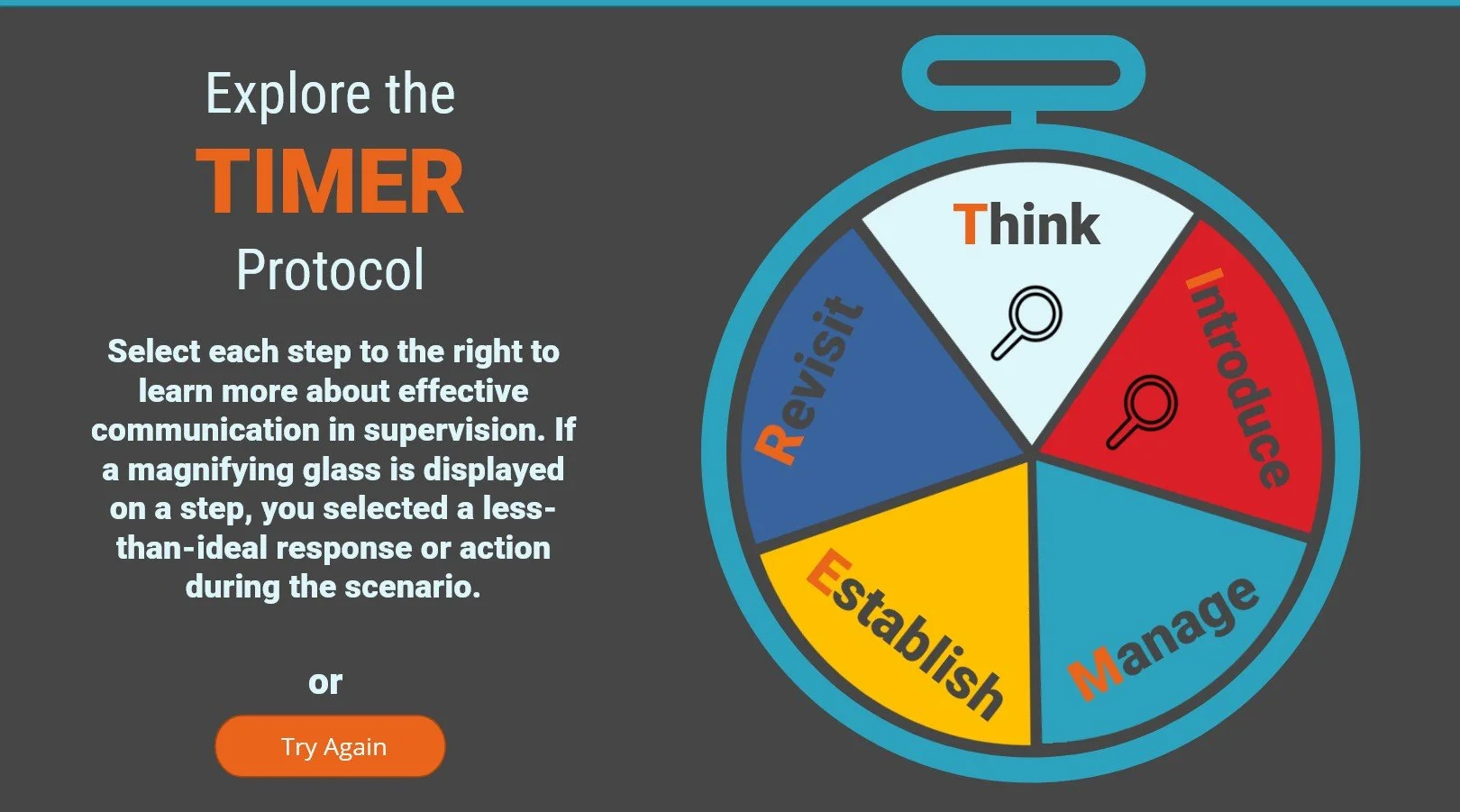The Problem
Employees in a supervisory role often avoid giving negative or constructive feedback. In many cases, constructive criticism is delayed until an annual performance review, creating an arduous task of gathering information, recalling details, and crafting an effective message — many months too late. Frequent feedback on performance and behavior serves as an effective tool in building the employee/manager relationship. However, even seasoned supervisors may lack the confidence and skill to initiate a productive conversation when problems need to be addressed.
The Solution
Branching, scenario-based training offers an opportunity for individuals to practice soft skills without high-stakes consequences. As the participant makes decisions based on their existing knowledge, the scenario branches into new directions, adding interest and engagement. When branching scenarios are designed to be as lifelike as possible, learners are presented with consequences of each decision. These interactions illicit the emotional response that is necessary for behavioral change.
The TIMER protocol was developed as a model of corrective feedback for supervisors in a hospital setting. When this protocol is presented in a scenario-based tutorial, learners gain a more empathetic understanding of the consequences of their decisions. Instead of committing a series of steps to rote memory, participants “learn by doing,” even when their choices lead to a less-than-ideal scenario outcome. Learners are not presented with full details about the TIMER protocol until after they have completed the scenario, so they may choose to learn more about specific steps and retry the scenario.
As learners select options during the scenario, project variables in Articulate Storyline track choices that are less than ideal. In the closing slide, a magnifying glass icon identifies steps in the TIMER protocol that may need more focused review.
Feedback Screen
Development
I interviewed an SME with experience in a supervisory role to discuss common issues that require corrective feedback. Using the notes from the interview, I developed a preliminary script for review by the SME. After minor changes, I developed a storyboard and map using Twine. A branch and bottleneck structure was used to manage complexity.
Map of scenario options in Twine
The scenario-based interaction was developed in Articulate Storyline with photo assets from Pexels.



